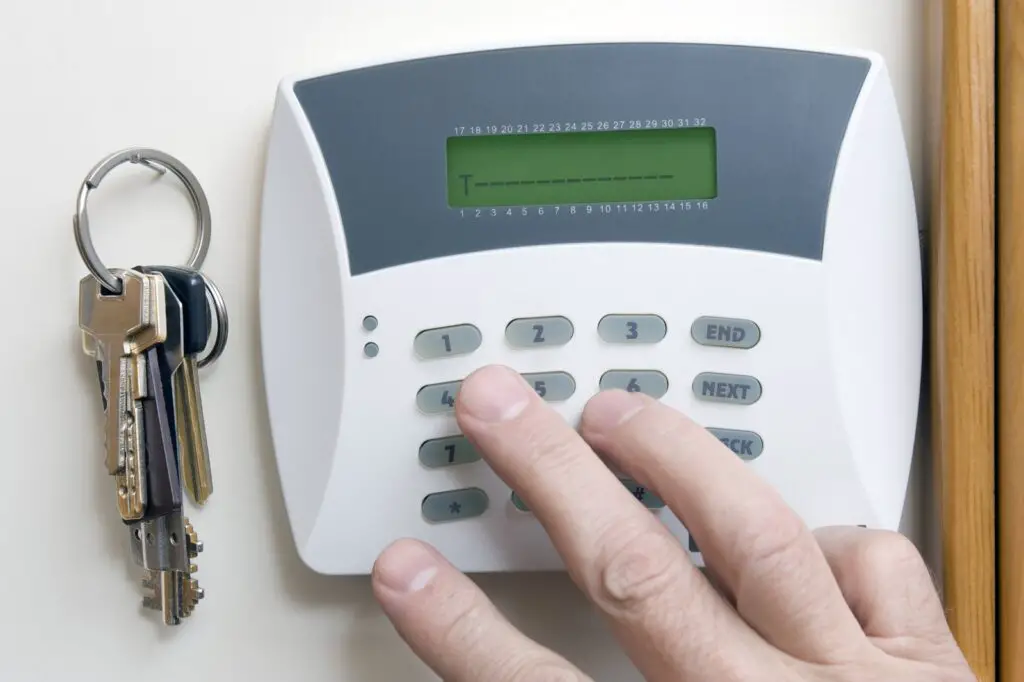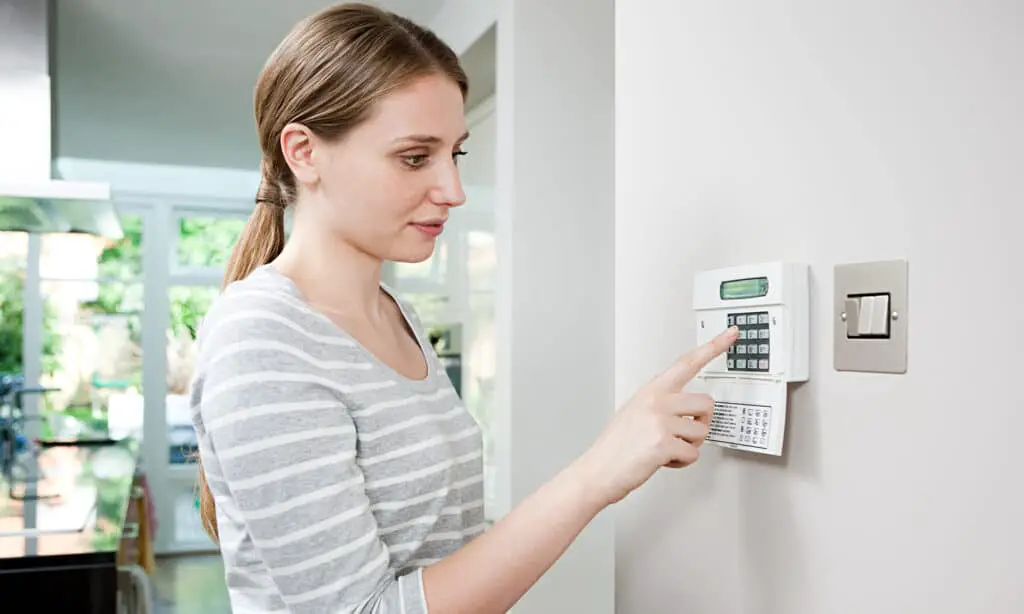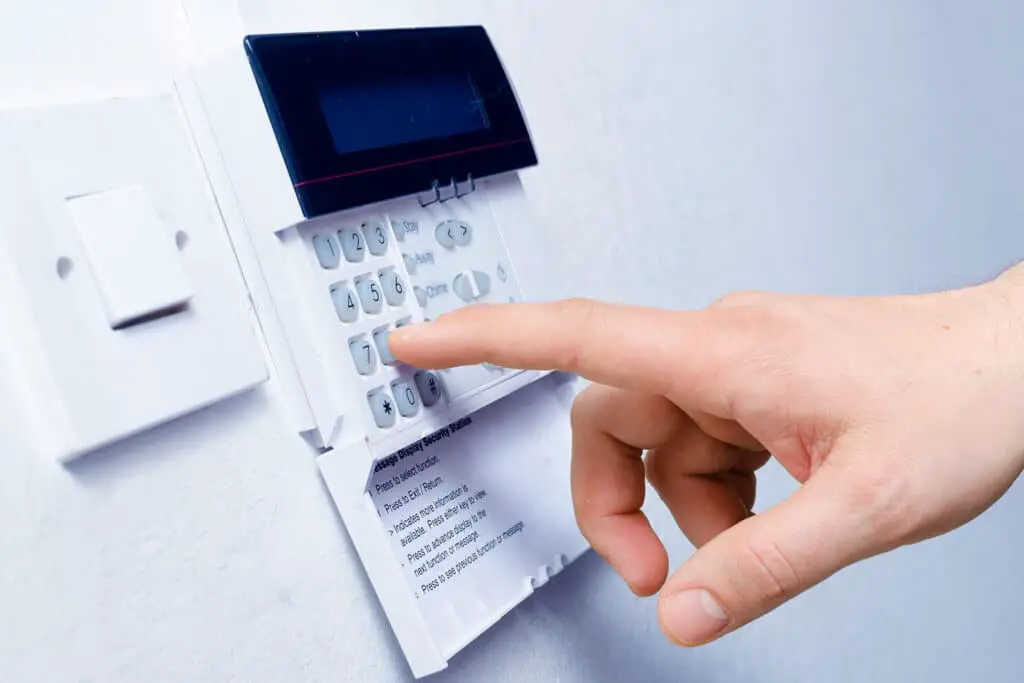Introduction
How to reset home alarm: Before attempting to reset the security alarm, make sure to disarm it by entering the current passcode or using the designated disarm method (e.g., key fob, remote control). This will prevent any unwanted activation during the reset process. The control panel is the central hub of the security alarm system, usually installed in a hidden or secure location. It contains the necessary buttons, keypad, and display to perform various functions, including resetting the system.
Depending on the system, you may need to enter a security alarm specific code or use a designated key to access the control panel. Refer to the manufacturer’s instructions to determine the correct method for accessing the panel. Once you have accessed the control panel, you will typically need to enter the master code or administrative code. This code is usually provided by the installer or set by the user during the initial setup of the security alarm system. If you don’t have the master code or have forgotten it, consult the manufacturer or contact a professional technician for assistance.
Use the keypad or buttons on the control panel to navigate through the menu options. Look for the “Reset” or “Factory Reset” option. Again, the specific location of these options may vary depending on the system, so consult the manufacturer’s instructions for guidance. Once you have located the reset option, follow the prompts on the control panel to confirm the reset process. This may involve entering a confirmation code or pressing a specific button.

How do you remove a security alarm?
8 Steps to Removing an Old Home Alarm System
- Assess the Alarm Components That Need to be Removed.
- Notify Your Alarm Company to Avoid a False Alarm.
- Disable the Alarm or Put It Into Maintenance Mode.
- Disconnect the Security Sirens.
- Detach the Power Supply to Prevent Injuries.
- Remove the Old Control Panel.
Disarm the alarm: Before you begin the removal process, make sure to disarm the alarm system. This involves entering the current passcode or using the designated disarm method, such as a key fob or remote control. Disarming the system prevents any unwanted activation during the removal process.
Locate the control panel: The control panel is the central hub of the security alarm system. It is typically installed in a hidden or secure location, such as a utility room or closet. Locate the control panel and ensure you have easy access to it.
Disconnect power supply: Begin the removal process by disconnecting the power supply to the alarm system. This involves locating the power source, which is usually a power outlet or dedicated power circuit. Unplug the power cord from the outlet or turn off the circuit breaker that supplies power to the system. Disconnecting the power supply ensures that the system is safely deactivated.
Remove backup batteries: Many security alarm systems have backup batteries to maintain functionality during power outages. Locate the backup battery compartment within the control panel and remove the batteries. This step ensures that the system is completely powered off and prevents any residual power from causing issues during removal.
How to Reset Home Alarm
Resetting a home alarm system can help resolve issues like false alarms or system malfunctions. Before resetting, make sure to disarm the alarm by entering your passcode or using a disarm method like a key fob. Locate the control panel, often found in a secure spot, and follow the manufacturer’s instructions to access the reset options. Depending on your system, you may need a master code to proceed. This guide will help you understand the steps to reset your alarm safely and effectively.
How do you reset a home alarm system?
How to reset a house alarm after a power cut?
- Locate the “System” or “System Status” button. On your home alarm keypad, find the “System” or “System Status” button.
- Open the control panel.
- Remove the backup battery.
- Switch the circuit breaker off and on.
- Replace the backup battery.
- Input your user code.
Disarm the alarm: Before attempting to reset the home alarm system, make sure to disarm it. This involves entering the current passcode or using the designated disarm method, such as a key fob or remote control. Disarming the system prevents any unwanted activation during the reset process.
Locate the control panel: The control panel is the central hub of the home alarm system. It is usually installed in a convenient location, such as near the main entrance or in a utility room. Locate the control panel and ensure you have easy access to it.
Access the control panel: Depending on the system, you may need to enter a specific code or use a designated key to access the control panel. Refer to the manufacturer’s instructions to determine the correct method for accessing the panel.
Enter the master code: Once you have accessed the control panel, you will typically need to enter the master code or administrative code. This code is usually provided by the installer or set by the user during the initial setup of the home alarm system. If you don’t have the master code or have forgotten it, consult the manufacturer or contact a professional technician for assistance.
Navigate the menu: Use the keypad or buttons on the control panel to navigate through the menu options. Look for the “Reset” or “Factory Reset” option. The specific location of these options may vary depending on the system, so consult the manufacturer’s instructions for guidance.
How do I reset my home alarm ring?
Press and hold the Connect Button (located on the side of the device) for 10 seconds until the LED Ring blinks once, then release the button.
Disarm the alarm: Before attempting to reset the home alarm system, make sure to disarm it. This involves entering the current passcode or using the designated disarm method, such as a key fob or remote control. Disarming the system prevents any unwanted activation during the reset process.
Locate the control panel: The control panel is the central hub of the home alarm system. It is usually installed in a convenient location, such as near the main entrance or in a utility room. Locate the control panel and ensure you have easy access to it.
Access the control panel: Depending on the system, you may need to enter a specific code or use a designated key to access the control panel. Refer to the manufacturer’s instructions to determine the correct method for accessing the panel.
Enter the master code: Once you have accessed the control panel, you will typically need to enter the master code or administrative code. This code is usually provided by the installer or set by the user during the initial setup of the home alarm system. If you don’t have the master code or have forgotten it, consult the manufacturer or contact a professional technician for assistance.
Navigate the menu: Use the keypad or buttons on the control panel to navigate through the menu options. Look for the “Reset” or “Factory Reset” option. The specific location of these options may vary depending on the system, so consult the manufacturer’s instructions for guidance.
What is reset alarm?
Sometimes your alarm will need to be rebooted or reset which is simply powering down the alarm completely then restarting. This should not be confused with “Defaulting The System” which would erase all existing panel configurations of zones, passcodes, essentially wiping the panel clean to factory settings
Access the Alarm Base Station: The Alarm Base Station is the central device of the Ring home alarm system. It is usually located near your main entryway or in a central area of your home. Locate the Base Station and ensure it is powered on.
Locate the reset button: On the back of the Alarm Base Station, you will find a small reset button. It is usually recessed to prevent accidental resets. Use a small tool, such as a paperclip or pin, to press and hold the reset button.
Reset the Alarm Base Station: While holding down the reset button, you will need to disconnect and reconnect the power source. This can be done by unplugging the power adapter from the Base Station or removing the backup battery if your system is equipped with one. After a few seconds, plug the power adapter back in or reinsert the backup battery while continuing to hold down the reset button.
Release the reset button: After approximately 15 seconds, release the reset button on the Alarm Base Station. The LED lights on the Base Station will start flashing, indicating that the reset process has begun.
Wait for the reset: Allow the Alarm Base Station a few moments to complete the reset process. The LED lights will continue flashing, and you may hear a voice prompt indicating that the Base Station is resetting. Be patient and avoid interrupting the process.
How do you reset a house alarm without the code?
How to Reset the Burglar Alarm with a Lost Code?
- You must look for the main access panel of your burglar alarm system.
- Shut off the current that sends power to the alarm.
- Unplug the device.
- Use a console access key to open the system’s backing.
- Disconnect the wire that leads to the backup battery.
Resetting an alarm system can serve various purposes. It may be necessary when you move to a new location and want to start fresh with the security system. It can also be useful if you encounter issues with the system, such as false alarms, malfunctions, or forgotten passcodes. Resetting the alarm can help resolve these issues by clearing any potential errors or conflicts within the system.
The specific steps for resetting an alarm system can vary depending on the manufacturer and model of the system. Generally, the process involves accessing the control panel or keypad of the alarm system, entering a master code or specific reset code, and confirming the reset action. It is crucial to consult the manufacturer’s instructions or seek professional assistance to ensure the correct procedure for your specific alarm system.
Resetting an alarm system typically erases all programmed information and settings. This includes passcodes, user preferences, alarm zones, entry and exit delays, and emergency contact information. After the reset, it is necessary to reconfigure the alarm system according to your preferences and security requirements. This involves setting new passcodes, adjusting sensor settings, programming alarm zones, and updating emergency contact details.

How do I reset my home alarm after changing the battery?
You can reset your alarm by following these quick steps:
- Disconnect all power sources (if you’re replacing a hardwired alarm’s battery, you’ll want to disconnect it from any wiring.
- Press and hold the test/silence button for 20 seconds.
- Reconnect all power sources (reconnect the wiring or plug back into the outlet).
Identify the control panel: Locate the control panel of your home alarm system. It is typically installed in a secure location, such as a utility room or closet. If you are unsure about the location of the control panel, consult the user manual or contact the alarm system manufacturer for guidance.
Access the control panel: Depending on the system, you may need to enter a specific code or use a designated key to access the control panel. Refer to the manufacturer’s instructions to determine the correct method for accessing the panel.
Disconnect the power supply: Before proceeding with the reset, disconnect the power supply to the control panel. This can usually be done by unplugging the power adapter from the control panel or by switching off the circuit breaker that supplies power to the system. Disconnecting the power supply ensures that the system is safely powered down.
Replace the battery: Locate the battery compartment within the control panel and remove the old battery. Take note of the battery’s orientation, as you will need to install the new battery correctly. Insert the new battery into the compartment, following the manufacturer’s instructions and ensuring proper polarity.
Will disconnecting battery reset alarm?
Car alarms rely on the electronic component of the vehicle, and disconnecting the battery should both silence the siren and reset your alarm. Open up the hood, locate the battery, and with a wrench, remove the negative terminal. Then reconnect it after a minute has passed.
Control panel backup batteries: Some alarm systems have backup batteries built into the control panel. These backup batteries provide power to the system even when the main battery is disconnected. If your alarm system has a control panel with backup batteries, simply disconnecting the main battery will not result in a complete power loss and may not reset the system.
Keypad codes and settings: Disconnecting the battery does not automatically reset the keypad codes or other customized settings of the alarm system. These settings are typically stored in non-volatile memory within the control panel or other memory storage devices. To reset keypad codes and settings, you would need to follow the specific instructions provided by the manufacturer or consult their support.
System-specific considerations: Different alarm systems have varying methods for reset or require specific steps to be followed. It is essential to consult the manufacturer’s instructions or contact their support to obtain accurate guidance on resetting your particular alarm system. They can provide you with the most accurate information specific to your system’s model and features.
Will a house alarm reset itself?
The alarm in your home security system is designed to be a deterrent to intruders, as well as alert occupants and draw attention to your home, whether that be from neighbors, passers-by, or authorities. Systems will sound for about 5 to 10 minutes, depending on the system, before stopping and automatically re-arming.
Power outage: If there is a power outage, the alarm system may temporarily lose power. Once power is restored, the system will typically resume its previous state, including any armed or disarmed status before the outage. However, the system may require a manual reset or acknowledgment to ensure all sensors and components are functioning properly.
Battery replacement: Some house alarm systems have backup batteries that maintain functionality during power outages. When the backup battery is replaced, the system may briefly reset or go through a power cycle. In such cases, the system will typically restore itself to the previous state after the reset.
System malfunctions: In the event of a system malfunction or error, some alarm systems may automatically reset themselves as a safety measure or to rectify the issue. This reset may be indicated by a temporary loss of power or a rebooting sequence. However, it is important to note that not all alarm systems have automatic reset mechanisms, and manual intervention may be required to address the malfunction.
Remote or cloud-based control: Some advanced alarm systems offer remote or cloud-based control through mobile apps or web interfaces. In these cases, users may have the option to remotely reset certain aspects of the system, such as arming and disarming or adjusting settings.

Conclusion
Some security alarm systems have backup batteries to ensure they remain operational even during power outages. If your alarm system has a backup power source, it is wise to turn it off before attempting a reset. This prevents any potential issues that may arise from the backup power during resetting the alarm system, and it’s a good practice to calibrate the sensors. This involves ensuring that each sensor is properly aligned, detecting motion or changes in the designated areas.
Consult your alarm system’s manual or contact the manufacturer for specific instructions on how to calibrate the sensors. Once the reset is complete, you will likely need to reconfigure your alarm system’s settings. This may include setting up new passcodes, adjusting entry and exit delay times, configuring zones, and updating emergency contact information. Take the time to review and customize these settings to fit your specific security needs.
After resetting and reconfiguring your security alarm, it’s crucial to thoroughly test the system. Activate different zones, trigger motion sensors, and ensure that the alarm system responds as expected. This step helps verify that all components are working correctly and that the system is providing the desired level of protection. Resetting a security alarm is just one aspect of maintaining a reliable and effective security system. It’s essential to establish a regular maintenance schedule, which may include testing the system periodically, replacing batteries when needed, and keeping the firmware or software up to date.

